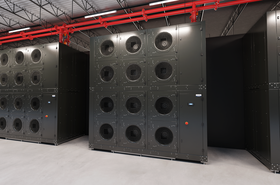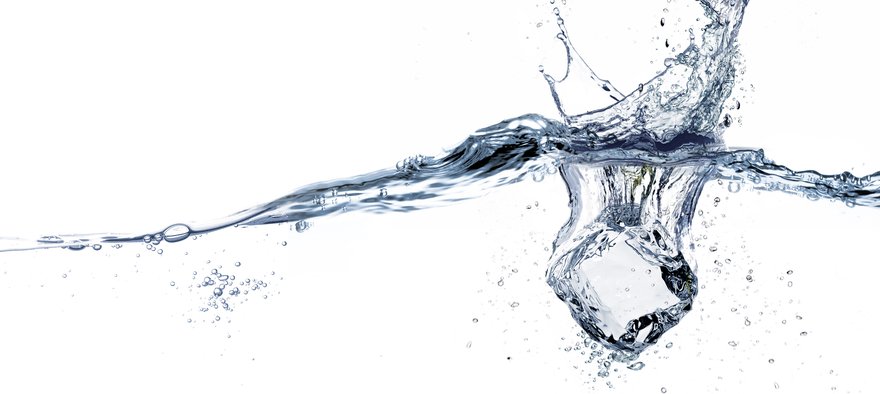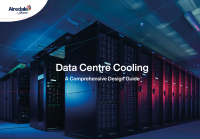Cooling has been a challenge since the dawn of computing, in both the biggest installations as well as the smallest – regardless of form factor, wringing out maximum performance from computers has always come with a cooling conundrum. And with the development of the Edge data center, the challenge has become more intense than ever.
After all, Edge encompasses a wide variety of disparate installations, which means the cooling architecture will invariably differ widely from site to site.
“Edge can be anything from 20kW facilities up to 5MW, depending on the industry you’re in and the scope of the data center. The 5G rollout has also brought telecoms base stations into play, with data center infrastructure growing there,” says Asim Ansari, director - Edge & Telecoms, EMEA & APAC, at Airedale.
He continues: “Then you have what you could call ‘small colocation’; regional data center and telephone exchange sites that are being upgraded for Edge and colo applications”
As such, defining a single line of products or technology as the answer to Edge cooling is similarly problematic, which is why companies like Airedale help clients put together cooling solutions on a case-by-case basis.
But it is the ongoing rollout of 5G, and applications intended to take advantage of increased data processing and transmitting power, such as autonomous vehicles, AI and IOT, that is evoking major interest at the moment – and perhaps the biggest Edge cooling challenge out there right now.
“With 5G rollouts especially, many of the telecoms companies are already upgrading their small remote cabins to install more data transfer switches. So at that low level, they may be going from just 5kW to 20kW, but the trend will only increase with higher density switches and heat loads. Then you also have the more medium-sized telecoms server rooms.” says Ansari.
Moreover, operators upgrading from a switch-filled cabin to installing fully fledged micro data centers at 5G sites will almost certainly be rolling out standardised cooling solutions, probably modular and containerised in style, and they will therefore need to be highly resilient and capable of operating in global ambient conditions.
“And we have to consider cooling solutions for more mainstream Edge sites, both greenfield and brownfield, as well,” says Ansari.
“At brownfield sites, you have existing infrastructure that requires upgrading. This can be a challenge when considering cooling solutions to ensure that you integrate the right solution that fits both the fabric of the building and the upgraded IT workload,” he says.
For example, the u-values of an old building – ie: its insulating qualities – will almost certainly be poor and it will therefore create extremes of very warm summers and chillier winters for its occupants. More practical considerations may need to be considered also, such as the old building’s ability of keeping out unwanted pests like mice.
“With greenfield sites, you have a blank canvas to work on, where you can design the most optimized, efficient and environmentally friendly cooling solution to suit the facility. This is a more straightforward solution, where standardized cooling block solutions come into play” adds Ansari.
But, generally speaking, all Edge data center operators want the same thing: local coverage, the lowest possible latency, and the ability to be scalable to support current demands while taking into account future developments at the chip-level or in the IT workload. There is a strong expectation that the last few percentage points in the development of autonomous vehicle technology will drop in the next few years, causing a surge in demand for data centers to support the advancement in self-driving vehicles.
Close to the Edge
All these variables make designing cooling for Edge data centers a real challenge.
But, as Ansari points out, Airedale is now in its 50th year of designing cooling systems – not just for data center operators, but also pharmaceutical giants, telecoms companies, the nuclear power sector, and industrial manufacturers – as well as developing building management systems (BMS), and tools like the Airedale Cooling System Optimizer™ and Cloud Diagnostics™ predictive maintenance package.
“We have been designing and manufacturing cooling solutions for a variety of market sectors including data centers, for the past five decades, and so the Edge cooling concept is nothing new to us. We are in a great position to adapt the innovative cooling solutions that we already supply to our customer base of large colo and hyperscale operators. Edge is definitely a different market sector, but translates to similar products that we have in our product portfolio, but on a smaller scale,” says Ansari.
“In order to manage the complete value supply chain for critical Edge applications, service support is critical for our end user customers. Our products are designed with full consideration of service access and maintenance processes,” he adds.
With the global warming phenomenon, summer ambient temperatures are rising globally, with the UK even seeing thermometers reaching 40 degrees Celsius in some parts in recent times.
“The result is that design considerations for standard products require a summer ambient operation up to 50 degrees ambient in most markets now. This can be exacerbated when we take into account microclimates, where you have a large population of equipment working together, further increasing the local ambient temperature” says Ansari.
Increasingly, he adds, greenfield sites are also abandoning raised floor designs in favour of maximising the indoor cooling space and creating a larger floor-to-ceiling area.
“This seems to have become the norm for Edge and, increasingly for colo,” he adds. This is ideal for our latest fan wall cooling range, AireWall ONE™, which is a parametric design suitable for horizontal airflow and configurable to maximise design options. Providing a system solution that is adaptable to the changing environments of Edge sites is key. Our market leading Controls solutions to optimise, monitor and control these changing environments is key to creating sustainable solutions.
Indeed, controls like the Airedale Cooling System Optimizer were the focus of a DCD feature with Reece Thomas, controls director at Airedale, in October.
“Every site is different, but the Optimizer and our other Control systems can adapt to meet the specific requirements of each and every site. It’s not just controlling the individual units, it’s controlling the system as a whole, redundantly, indoors and outdoors. It links temperatures recorded in the white space all the way back to optimize the chiller,” he told DCD.
Moreover, it also monitors outside temperatures, enabling the Airedale Cooling System Optimizer to switch chillers to free cooling mode when appropriate, helping to save money and make deeper cuts to carbon emissions.
Operating at the Edge will require smarter remote management, with geographically diverse sites and fewer staff on-hand to manage the day-to-day operations and respond to issues.
“Within the Airedale Controls technology stack we are able to normalise all data from equipment and the environment. Normalising the data is key to simplifying the ability to provide scalable and reliable remote monitoring solutions. Once the site data is collated in a common place from multiple locations, analytic tools can be applied to ensure sites operate as expected. Machine learning and control algorithms can be utilised to assist in providing preventative maintenance across the estate.” Reece added.
Supply chain resilience
While the supply chain challenges of recent years have abated somewhat, stubborn issues remain. Airedale continues to manage its supply chain closely, by working closely with customers and understanding their contractual timelines. They are increasingly purchasing long lead-time components well in advance of manufacture, to ensure that they are in stock to align with production planning.
“This is where agreed and standardised building block cooling solutions can create a significant advantage to facilitate the faster deployment of Edge DC’s. Manufacturing can plan months ahead with production commitments, which creates a stock and ready-made solution for our key end user customers,” says Ansari.
Future-proofing cooling
While cooling manufacturers like Airedale need to look ahead to keep moving, the market isn’t standing still.
Ever-more powerful – and power-hungry – CPUs and GPUs are already moving into mainstream data centers, necessitating some form of liquid cooling to manage the heat dissipation, and these will be hitting the Edge market sector soon.
“In my view, there’s a definite requirement emerging for liquid cooling, but this is currently only for very specific and unique applications. Increasingly, we’ll see hybrid solutions, with some liquid cooling where you have high-density servers, together with more traditional air cooling,” says Ansari.
And that, again, will require particular design from specialists with the experience to specify solutions that are optimised for the facility and the environment in which it is running.
After all, a lot of companies provide cooling solutions, but not all have expertise specific to data center cooling and optimizing efficiency for the data center. “Cooling solutions can vary widely. We differentiate ourselves with our up-front design, whether that’s via CFD analysis to model airflows, or the bespoke configuration of our heat exchangers,” says Ansari.
To find out more about the full range of Airedale’s Edge cooling designs and solutions, please check out Airedale’s dedicated Edge data center cooling website.
More...
-

Rise of the machines
How to ensure that AI realises its potential in data center cooling
-

Sponsored I know what you did last summer
Has Thames Water’s latest announcement on water restrictions sent a chill down the spine of London data center operators?
-

Sponsored Airedale launches parametric data center cooling range
Critical cooling specialist Airedale introduces AireWall ONE, designed by industry experts to deliver a flexible, efficient and global range of data center fan arrays geared towards scalability and sustainability



